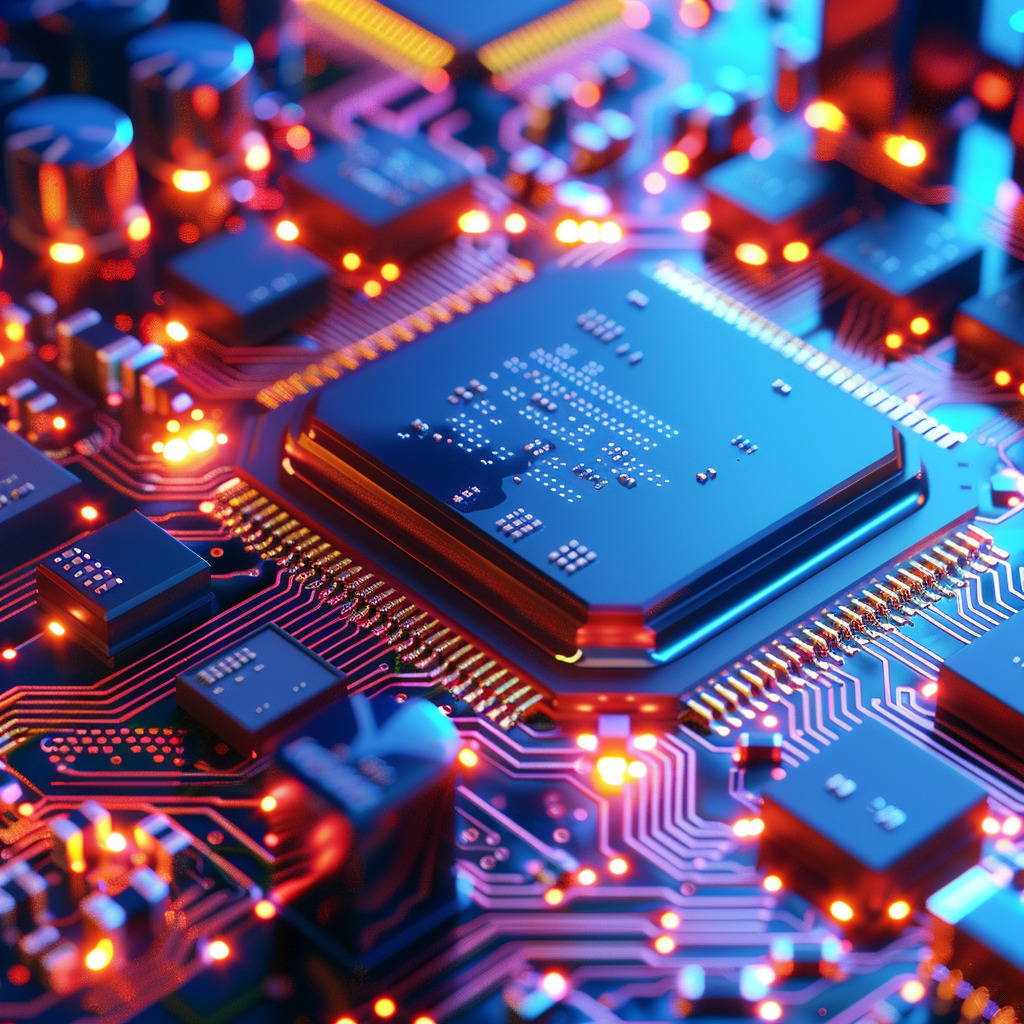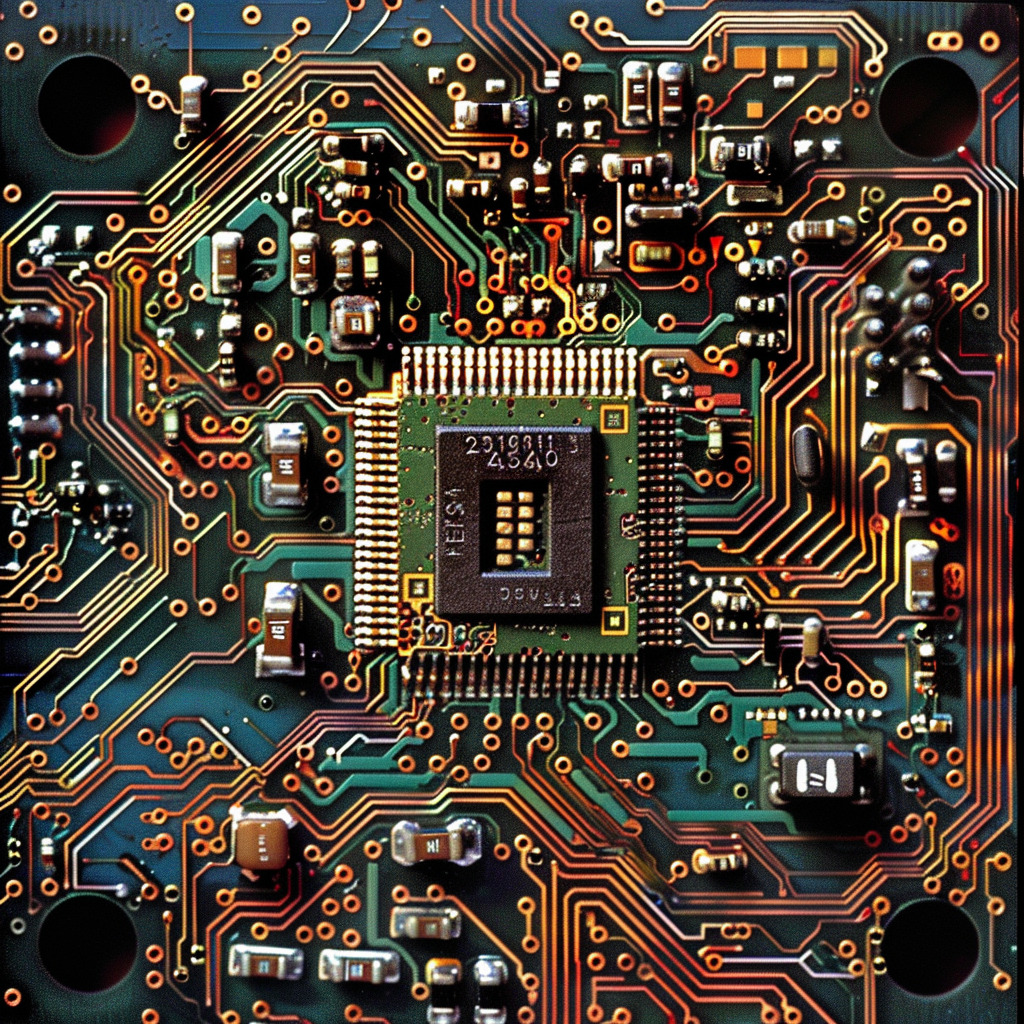Time: 2024-03-14 14:28:52View:
A microprocessor, integrated on a single chip, acts as the central processing unit (CPU) of a computer or electronic device. It is responsible for executing instructions and carrying out calculations. Microprocessors are crucial components in various modern electronic devices, ranging from smartphones and tablets to desktop computers and embedded systems.
Comprising millions, or even billions, of transistors etched onto a silicon chip, a microprocessor's core functionality relies on these transistors acting as switches to control the flow of electrical current within the chip. These transistors are organized into different functional units, including the arithmetic logic unit (ALU), control unit, memory management unit (MMU), and cache memory.
The ALU handles mathematical and logical operations like addition, subtraction, multiplication, and comparison. The control unit oversees instruction execution by fetching, decoding, and coordinating data flow among various microprocessor components. The MMU manages memory-related tasks such as virtual memory management and address translation. Cache memory stores frequently accessed data and instructions for quicker access compared to main memory.
Microprocessors follow a specific architecture or instruction set to execute instructions sequentially. Common instruction sets include x86 (utilized by Intel and AMD processors), ARM (common in mobile devices), and MIPS (used in embedded systems and some consumer electronics). These instruction sets determine the operations the microprocessor can perform and the instruction format it recognizes.
Microprocessors are available in a variety of types, each tailored to specific applications and needs. The most common types include:
1. General-Purpose Microprocessors: These processors are versatile and can handle a wide range of computing tasks. They are commonly found in desktop computers, laptops, and servers, striking a balance between performance and power consumption. Examples include Intel's x86 processors (like the Core i7 series) and AMD's Ryzen processors.
2. Mobile Processors: Designed specifically for smartphones, tablets, and other portable devices, mobile processors prioritize power efficiency to prolong battery life while delivering adequate processing power for mobile applications. ARM-based processors, such as Qualcomm's Snapdragon and Apple's A-series chips, dominate this market.
3. Embedded Processors: Embedded processors are utilized in various embedded systems, including industrial automation, automotive electronics, and consumer electronics. They are tailored to perform specific tasks within a dedicated system, like controlling machinery or processing sensor data. Examples include ARM Cortex-M series microcontrollers and Intel's Atom processors.
4. Graphics Processing Units (GPUs): GPUs are specialized microprocessors designed for handling complex graphics and parallel processing tasks. Initially developed for rendering graphics in video games, modern GPUs are now used in artificial intelligence, scientific computing, and cryptocurrency mining. Popular GPU brands include NVIDIA's GeForce and AMD's Radeon series.
5. Digital Signal Processors (DSPs): DSPs are optimized for processing digital signals, such as audio, video, and sensor data. They are commonly used in applications requiring real-time signal processing, like telecommunications, audio processing, and image/video compression. Examples of DSPs include Texas Instruments' TMS320 series and Analog Devices' SHARC processors.
Microprocessors work by executing a series of instructions to perform calculations, manipulate data, and control the flow of information within a computer or electronic device. Here's a brief overview of how microprocessors function:
Fetch: The microprocessor fetches the next instruction from memory. The instruction is typically stored in sequential memory addresses, and the microprocessor retrieves it by sending the appropriate memory address to the memory unit.
Decode: The fetched instruction is then decoded, determining the operation to be performed and the operands involved. The microprocessor's control unit interprets the instruction and prepares the necessary resources to execute it.
Execute: The microprocessor carries out the operation specified by the decoded instruction. This may involve arithmetic calculations, logical operations, data transfers, or control flow changes. The microprocessor's arithmetic logic unit (ALU) performs arithmetic and logical operations, while other units handle tasks like memory access and input/output operations.
Write Back: After executing the instruction, the microprocessor may need to write the result back to memory or update internal registers. The result of the operation is stored in the appropriate location, ready for further processing or futureuse.
The process of fetching, decoding, executing, and writing back instructions is repeated continuously, forming a loop known as the instruction cycle or fetch-decode-execute cycle. The microprocessor fetches the next instruction, decodes it, executes it, and then proceeds to the next instruction.
For your reference, below I present a video that related to the working principle of microprocessors:
Microprocessors and integrated circuits (ICs) are closely related but represent different aspects of electronic technology.
An integrated circuit, often referred to as a chip or microchip, is a miniaturized electronic circuit that integrates multiple electronic components onto a single semiconductor substrate. It combines transistors, resistors, capacitors, and other passive components to create a functional unit. Integrated circuits can be analog or digital, and they are used in a wide range of electronic devices, from simple consumer electronics to complex computer systems.
Microprocessors, on the other hand, are a specific type of integrated circuit. They are designed to function as the central processing unit (CPU) of a computer or electronic device. A microprocessor integrates key components of a CPU, such as the arithmetic logic unit (ALU), control unit, registers, and cache memory, onto a single chip. It executes instructions, performs calculations, and controls the flow of data within the system.
While integrated circuits can serve various functions, microprocessors focus specifically on processing and controlling tasks. They are optimized for high-speed data manipulation and executing complex instructions. Microprocessors are programmable and capable of running software, making them versatile for a wide range of applications.
Integrated circuits, on the other hand, encompass a broader spectrum. They can include memory chips, analog circuits, digital circuits, and specialized circuits for specific applications. Integrated circuits can be designed for tasks such as amplification, filtering, signal processing, and memory storage. They are used in devices like smartphones, televisions, medical equipment, automotive systems, and many other electronic devices.
Microprocessors are essentially a type of integrated circuit with a specific purpose, while integrated circuits encompass a wider range of components and functions. However, it's important to note that the boundaries between the two can sometimes blur. For example, a microcontroller is an integrated circuit that combines a microprocessor core with other components, such as memory, input/output interfaces, and timers, on a single chip.
In summary, integrated circuits are miniaturized electronic circuits that integrate multiple components onto a single chip. They can serve various functions, including signal processing, memory storage, and control. Microprocessors are a specific type of integrated circuit designed to function as the CPU of a computer or electronic device. They focus on executing instructions, performing calculations, and controlling data flow. While microprocessors are a subset of integrated circuits, the terms are often used interchangeably due to the widespread use of microprocessors in various applications.

Microprocessors have found widespread applications across numerous industries and have revolutionized the way we live and interact with technology. Here are some key areas where microprocessors are extensively used:
1. Computing Devices: Microprocessors are the heart of computers, ranging from desktops and laptops to servers. They enable the execution of complex software applications, handle data processing, and provide the computing power needed for various tasks, including web browsing, multimedia playback, gaming, and data analysis.
2. Mobile Devices: Microprocessors power smartphones, tablets, and wearable devices. They enable mobile computing, support operating systems, and provide the computational capabilities necessary for tasks like mobile apps, internet browsing, social media, and multimedia playback.
3. Internet of Things (IoT): Microprocessors play a crucial role in IoT devices, which are interconnected devices that collect and transmit data. They are used in smart home systems, industrial automation, healthcare monitoring devices, environmental sensors, and other IoT applications. Microprocessors enable data processing, connectivity, and control in these devices.
4. Automotive Systems: Microprocessors are extensively used in automotive electronics to control various systems and functions. They power the engine control unit (ECU), manage safety systems, enable infotainment systems, assist in navigation, and support advanced driver-assistance systems (ADAS) such as collision avoidance and adaptive cruise control.
5. Industrial Automation: Microprocessors are vital in industrial automation for controlling machinery, monitoring processes, and enabling communication between different components. They are used in programmable logic controllers (PLCs), robotics, manufacturing equipment, and supervisory control and data acquisition (SCADA) systems.
6. Consumer Electronics: Microprocessors are present in a wide range of consumer electronics, including televisions, set-top boxes, gaming consoles, digital cameras, home appliances, and audio equipment. They enable advanced features, user interfaces, connectivity options, and multimedia capabilities.
7. Medical Devices: Microprocessors are used in various medical devices, such as MRI machines, CT scanners, patient monitoring systems, infusion pumps, and implantable devices. They enable data processing, control functions, and communication in medical equipment, contributing to improved diagnostics, treatment, and patient care.
8. Aerospace and Defense: Microprocessors play a critical role in aerospace and defense systems, including avionics, satellites, missiles, radar systems, and unmanned aerial vehicles (UAVs). They provide computing power for guidance, navigation, communication, data processing, and control in these complex systems.
9. Communication Systems: Microprocessors are used in network routers, switches, modems, and telecommunications equipment. They handle data routing, protocol handling, signal processing, and control functions, ensuring efficient and reliable communication.
10. Gaming and Entertainment: Microprocessors power gaming consoles, graphics cards, and virtual reality systems, providing the necessary processing power for immersive gaming experiences and rendering complex graphics.

In conclusion, a microprocessor is a vital component that lies at the heart of modern technology. With its ability to execute instructions, perform calculations, and control data flow, the microprocessor has revolutionized industries across the board. Their versatility, computational power, and integration capabilities have propelled innovation, enabling us to enjoy the benefits of interconnected devices, efficient data processing, and seamless user experiences.